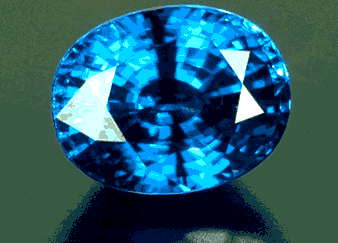

Hardness:
7.5.
Occurrence:
Sri Lanka (Ceylon), Thailand,
Myanmar (Burma), Cambodia, Vietnam, Kampuchea, Australia, Brazil, Nigeria,
Tanzania and France.
Appearance:
Zircon, a naturally occurring
gemstone, has colorless, yellow, orange, red, blue, brown and green varieties.
Zircon, by it's name, is sometimes confused with cubic zirconia ("CZ"),
which is synthetic. In addition, both have been used as diamond substitutes.
Zircon has a high refractive index which is responsible for it's diamond
like appearance. Zircon can be distinguished from diamond by it's double
refraction and by wear and tear of it's edges, as compared to diamond which
is very much harder.
Something Extra:
Zircon's name comes from
the Arabic zargoon, meaning vermilion. Zircon was worn by the ancients
as amulets protecting travelers against the plague, wound and injuries.
It proportedly guarded sailors from lightning and expelled evil spirits
through its brightness.
Hindu poets tell of the
Kalpa Tree, the ultimate gift to the gods, which was a glowing tree covered
with gemstone fruit with
leaves of zircon. Zircon has long had a supporting role to more well-known
gemstones, often stepping
in as an understudy when they were unavailable.
In the middle ages, zircon
was said to aid sleep, bring prosperity, and promote honor and wisdom in
its owner. The name probably
comes from the Persian word zargun which means "gold-colored,"
although zircon comes
in a wide range of different colors.
Natural zircon today suffers
for the similarity of its name to cubic zirconia, the laboratory-grown
diamond imitation. Some
don't realize that there is a beautiful natural gemstone called zircon.
Zircon occurs in a wide
range of colors but for many years, the most popular was the colorless
variety which looks more
like diamond than any other natural stone due to its brilliance and
dispersion.
The following
are different of Zircon:
- Blue
Zircon
- Bronze
Zircon
- Golden
Zircon
- Green
Zircon